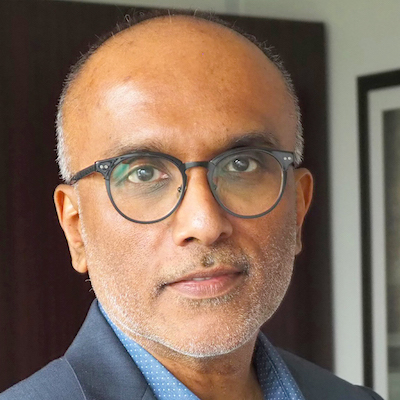Can journalism survive in a post-news world?
The world of information has witnessed transformational changes in the past two decades, both in terms of the pace of exchange and quantum. Although access to information has been gradually increasing throughout our collective history, the sheer magnitude of change over the past decade alone dwarfs anything witnessed before. Just between 2010 to 2019, the world added 1.9 billion new internet users, and that number will only increase as internet access evolves into a fundamental right, not a mere service.
This changing dynamic poses several existential challenges for journalists and media organizations, foremost among them being whether journalism can move beyond news and provide value in a “post-news” world. In a world of surplus information, news as a product is fast losing relevance. News has always been a subset of the larger information ecosystem — a category tag that journalists and publishers created to highlight relevancy in a finite information world.
The penetration of technology into our daily lives gives each individual an opportunity to both create and present the world around them instantaneously. This has led to a rapid increase in both information collection and consumption. Individuals and social groups, who once relied on journalists to provide them with a daily dose of information, are cutting out the middleman and getting their “news” directly from the proverbial horse’s mouth through social media platforms. Now, every smartphone user has the ability to be their own media outlet through platforms like Twitter and Instagram. The pandemic has served as a catalyst for this change in behavior.
Before we delve further into this challenge, we first need to consider the world in which journalism and news, journalism’s most identifiable product, emerged. Current journalism and media organizations are predicated on the pre-digital notion that information is finite. News companies and their journalists were all structured around a real-world problem at the time: accessing and collecting information that wasn’t easily available. The crucial decisions most editors made were about resource allocation, such as where to send reporters to gather what information. The basic logic that drove this decision-making was finding information that would have the largest impact on the widest number of people.
The end result of this process was news. In the absence of a competing medium, whether on newspapers, radio or television, news came to be identified as the single point of all recent and relevant information for society, collated by journalists, who were thus chiefly responsible for keeping the citizenry informed.
But today, information is infinite and increasing by the minute, and access to it is available at your literal fingertips.
In a world full of media, the pre-digital era distinction between news and information has become more distributed, based on individual relevance. Information once characterized as news by journalists — and by default relevant to everyone — is now more prone to individual affinities. The same information will be viewed differently by two individuals based purely on what matters to them. One person’s relevant news is irrelevant to someone else.
And why rely on a journalist if your peers have the same access to the same information from the same source? News organizations are increasingly moving from being a primary source of information to being a source of validation of already-consumed news. With the presence of multiple media players, one of them is bound to validate your version of the consumed information, making the rest of the organizations seem misguided. Hence the emergence of the post-news world and the general erosion of trust in journalism and journalists across the globe.
While it’s easy to blame the audience for being shortsighted and gullible — for no longer trusting journalists — that doesn’t address the changing landscape of challenges that face journalism as a profession. Unless they’re addressed, journalism as a profession is bound to join the long list of occupations once considered essential but made irrelevant by social change.
The fundamental question all journalists — especially those just joining the profession — should be grappling with is: How can journalism add value in a world where some of journalism’s most potent tools have been made irrelevant?
Is there a need to move beyond news? Can journalism move beyond news? What is the exact nature of the value proposition journalism provides that will lead to it continuing to be considered a pillar of the modern social order?
There’s an urgent need within the journalism community to take a leaf out of the technology playbook — to look at the next steps through the lens of product development. What is the need that journalism as a profession aims to fulfill? In a world of excess information, providing information alone won’t guarantee success. However, in a world of information overload, credible information — or credibility itself — is the opportunity gap for journalism to rally around to create a sustainable value proposition.
And even though credibility is a borderline emotion and therefore extremely difficult to deliver, credibility is often more related to the process of the outcome than to the outcome itself.
To this end, journalists need to create transparent processes that provide the general public with the means of validating their work. This process cannot be left to the whims of individual journalists or organizations; it should be a mutually agreed set of ethical standards and governing principles on which to judge any journalistic pursuit.
Journalism also needs to create a defined process of how any individual can become a journalist. Just as lawyers have to pass the bar exam, doctors have to meet standards to continue practicing, and accountants must pass extensive examinations, journalists too must have a minimum benchmark required to be included in the profession. How can we expect the public’s trust when there are no guidelines, standards, or benchmarks for them to authenticate that trust?
Objectivity, once the cornerstone of journalism, has lately been shelved as a principle within the larger profession. While pure objectivity might well be an unattainable goal, the pursuit of objectivity must be restored as a fundamental principle of journalistic practice. Journalism as a profession has to be beyond reproach.
Technology could and should act as a force multiplier for journalism in achieving these objectives. To create internal pitch-to-publishing editorial processes that allow for user visibility, meaningful input, and engagement from audiences at large. To create a system that merges the benefits of crowdsourcing with a journalistic and investigative lens while maintaining transparency for end users throughout the entire process. It’s imperative for journalism and journalists to view technology as more than just an enabler of distribution.
The world of information will only evolve at a greater pace from here, aided by technological advancements and newer mediums of interaction. Now more than ever, there’s a need for journalism to redefine its place in society, to move beyond news and create guiding principles that clearly demonstrate the objective of the fourth estate while maintaining transparency.
2022 could be another year where we question the validity and the state of journalism. But I believe 2022 will be a year where we as a profession understand the need and the urgency to act and evolve into what current and future societies would expect from the defenders of democracy — transparency and objectivity.
Shalabh Upadhyay is founder of NEWJ in India.

The world of information has witnessed transformational changes in the past two decades, both in terms of the pace of exchange and quantum. Although access to information has been gradually increasing throughout our collective history, the sheer magnitude of change over the past decade alone dwarfs anything witnessed before. Just between 2010 to 2019, the world added 1.9 billion new internet users, and that number will only increase as internet access evolves into a fundamental right, not a mere service.
This changing dynamic poses several existential challenges for journalists and media organizations, foremost among them being whether journalism can move beyond news and provide value in a “post-news” world. In a world of surplus information, news as a product is fast losing relevance. News has always been a subset of the larger information ecosystem — a category tag that journalists and publishers created to highlight relevancy in a finite information world.
The penetration of technology into our daily lives gives each individual an opportunity to both create and present the world around them instantaneously. This has led to a rapid increase in both information collection and consumption. Individuals and social groups, who once relied on journalists to provide them with a daily dose of information, are cutting out the middleman and getting their “news” directly from the proverbial horse’s mouth through social media platforms. Now, every smartphone user has the ability to be their own media outlet through platforms like Twitter and Instagram. The pandemic has served as a catalyst for this change in behavior.
Before we delve further into this challenge, we first need to consider the world in which journalism and news, journalism’s most identifiable product, emerged. Current journalism and media organizations are predicated on the pre-digital notion that information is finite. News companies and their journalists were all structured around a real-world problem at the time: accessing and collecting information that wasn’t easily available. The crucial decisions most editors made were about resource allocation, such as where to send reporters to gather what information. The basic logic that drove this decision-making was finding information that would have the largest impact on the widest number of people.
The end result of this process was news. In the absence of a competing medium, whether on newspapers, radio or television, news came to be identified as the single point of all recent and relevant information for society, collated by journalists, who were thus chiefly responsible for keeping the citizenry informed.
But today, information is infinite and increasing by the minute, and access to it is available at your literal fingertips.
In a world full of media, the pre-digital era distinction between news and information has become more distributed, based on individual relevance. Information once characterized as news by journalists — and by default relevant to everyone — is now more prone to individual affinities. The same information will be viewed differently by two individuals based purely on what matters to them. One person’s relevant news is irrelevant to someone else.
And why rely on a journalist if your peers have the same access to the same information from the same source? News organizations are increasingly moving from being a primary source of information to being a source of validation of already-consumed news. With the presence of multiple media players, one of them is bound to validate your version of the consumed information, making the rest of the organizations seem misguided. Hence the emergence of the post-news world and the general erosion of trust in journalism and journalists across the globe.
While it’s easy to blame the audience for being shortsighted and gullible — for no longer trusting journalists — that doesn’t address the changing landscape of challenges that face journalism as a profession. Unless they’re addressed, journalism as a profession is bound to join the long list of occupations once considered essential but made irrelevant by social change.
The fundamental question all journalists — especially those just joining the profession — should be grappling with is: How can journalism add value in a world where some of journalism’s most potent tools have been made irrelevant?
Is there a need to move beyond news? Can journalism move beyond news? What is the exact nature of the value proposition journalism provides that will lead to it continuing to be considered a pillar of the modern social order?
There’s an urgent need within the journalism community to take a leaf out of the technology playbook — to look at the next steps through the lens of product development. What is the need that journalism as a profession aims to fulfill? In a world of excess information, providing information alone won’t guarantee success. However, in a world of information overload, credible information — or credibility itself — is the opportunity gap for journalism to rally around to create a sustainable value proposition.
And even though credibility is a borderline emotion and therefore extremely difficult to deliver, credibility is often more related to the process of the outcome than to the outcome itself.
To this end, journalists need to create transparent processes that provide the general public with the means of validating their work. This process cannot be left to the whims of individual journalists or organizations; it should be a mutually agreed set of ethical standards and governing principles on which to judge any journalistic pursuit.
Journalism also needs to create a defined process of how any individual can become a journalist. Just as lawyers have to pass the bar exam, doctors have to meet standards to continue practicing, and accountants must pass extensive examinations, journalists too must have a minimum benchmark required to be included in the profession. How can we expect the public’s trust when there are no guidelines, standards, or benchmarks for them to authenticate that trust?
Objectivity, once the cornerstone of journalism, has lately been shelved as a principle within the larger profession. While pure objectivity might well be an unattainable goal, the pursuit of objectivity must be restored as a fundamental principle of journalistic practice. Journalism as a profession has to be beyond reproach.
Technology could and should act as a force multiplier for journalism in achieving these objectives. To create internal pitch-to-publishing editorial processes that allow for user visibility, meaningful input, and engagement from audiences at large. To create a system that merges the benefits of crowdsourcing with a journalistic and investigative lens while maintaining transparency for end users throughout the entire process. It’s imperative for journalism and journalists to view technology as more than just an enabler of distribution.
The world of information will only evolve at a greater pace from here, aided by technological advancements and newer mediums of interaction. Now more than ever, there’s a need for journalism to redefine its place in society, to move beyond news and create guiding principles that clearly demonstrate the objective of the fourth estate while maintaining transparency.
2022 could be another year where we question the validity and the state of journalism. But I believe 2022 will be a year where we as a profession understand the need and the urgency to act and evolve into what current and future societies would expect from the defenders of democracy — transparency and objectivity.
Shalabh Upadhyay is founder of NEWJ in India.
John Davidow

Daniel Eilemberg

Sarah Stonbely

Chase Davis

Millie Tran

Mario García

Izabella Kaminska

Christina Shih

A.J. Bauer

Cristina Tardáguila

Gordon Crovitz

Francesco Zaffarano

Mary Walter-Brown

Natalia Viana

Wilson Liévano

Alice Antheaume

Tony Baranowski

Joshua P. Darr

Joni Deutsch

Anthony Nadler

Victor Pickard

Nik Usher

Sarah Marshall

Simon Galperin

Shalabh Upadhyay

Gonzalo del Peon

Whitney Phillips

Jessica Clark

Simon Allison

Zizi Papacharissi

Laxmi Parthasarathy

Shannon McGregor Carolyn Schmitt

Paul Cheung

j. Siguru Wahutu

Jonas Kaiser

Moreno Cruz Osório

Andrew Freedman

Mandy Jenkins

AX Mina

Stephen Fowler

Jennifer Brandel

Raney Aronson-Rath

Jody Brannon

Megan McCarthy

James Salanga

Julia Munslow

Sam Guzik

David Skok

Matthew Pressman

Jim Friedlich

Anika Anand

Cherian George

Parker Molloy

Jesse Holcomb

Amara Aguilar

Jennifer Coogan

Ståle Grut

Robert Hernandez

Errin Haines

Ariel Zirulnick

Rasmus Kleis Nielsen

Stefanie Murray

Matt Karolian

Candace Amos

Don Day

Joy Mayer

Tom Trewinnard

Meena Thiruvengadam

S. Mitra Kalita

Brian Moritz

Richard Tofel

Kerri Hoffman

Matt DeRienzo

Joanne McNeil

Eric Nuzum

James Green

Tamar Charney

Kristen Muller

Melody Kramer

Michael W. Wagner

Mike Rispoli

Christoph Mergerson

Chicas Poderosas

Doris Truong

Cindy Royal

Gabe Schneider

Jesenia De Moya Correa

Anita Varma

Larry Ryckman

Amy Schmitz Weiss

Kendra Pierre-Louis

Catalina Albeanu

Rachel Glickhouse

Joe Amditis

David Cohn

Kathleen Searles Rebekah Trumble

Julia Angwin

Burt Herman

Juleyka Lantigua

Kristen Jeffers
